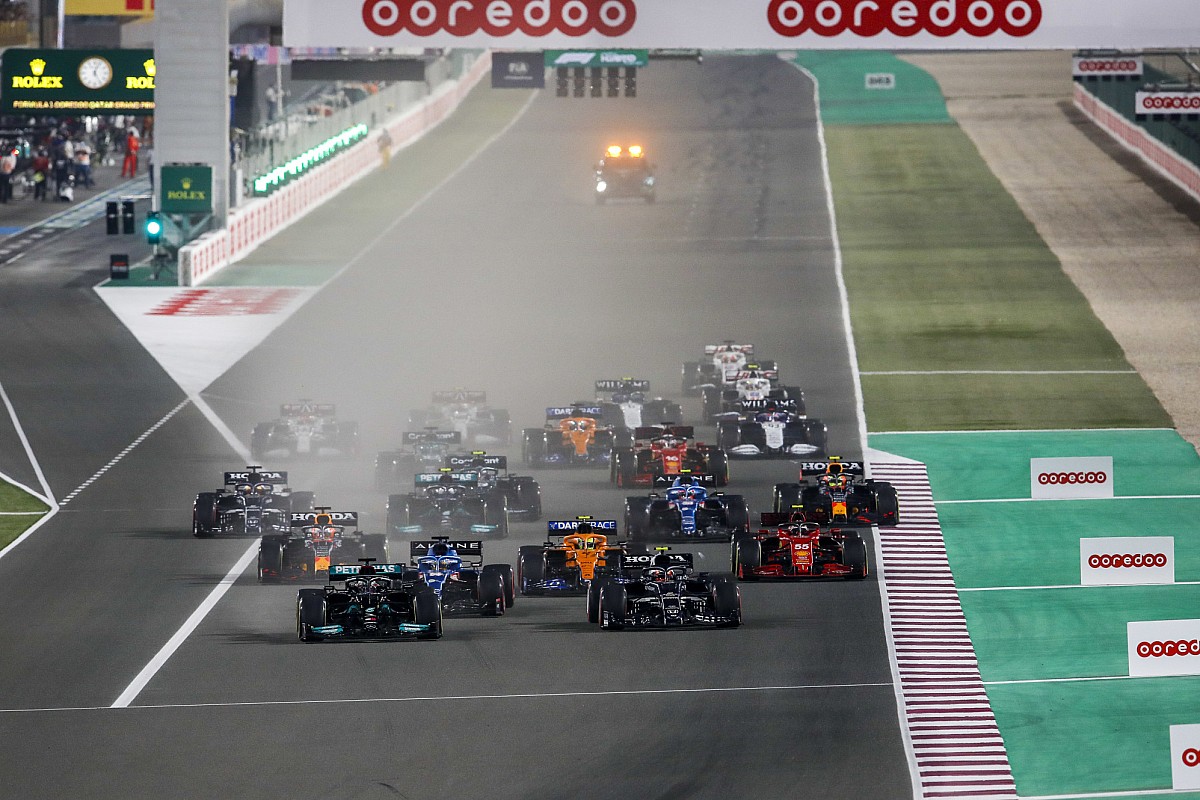The inaugural event in 2021 came towards the end of the thrilling campaign as the title battle intensity between Lewis Hamilton and Max Verstappen ramped up.
Since then, F1’s cars have changed dramatically with the new generation of ground effect machinery having little in common with the older specs.
But if teams had hoped to be able to fall back on some old data to help them out ahead of this weekend’s race, they will be disappointed – because the circuit is effectively considered to be brand new.
That is because circuit bosses have totally revamped the venue. And beyond the new pits and paddock complex, of more importance to teams and drivers is the work that has been completed out on the circuit.
As the FIA pointed out in its official preview notes for the weekend, the first major resurfacing work since the venue opened in 2004, allied to other changes, have made a big difference.
It said: “The entire track has been resurfaced and all the kerbs, run-off areas, guardrails and fences have been replaced since the previous event.
“Given the extensive nature of the changes made, to all intents and purposes, it is considered to be a new circuit.”

Max Verstappen, Red Bull Racing RB16B, Lance Stroll, Aston Martin AMR21
Photo by: Charles Coates / Motorsport Images
While F1 teams are professional enough to cope with such venue changes on race weekends, the ‘new’ Lusail adds an extra layer of complication on a weekend when they already face many headaches in how they approach things.
As a sprint race, that means that teams will need to be on their toes to ensure that they make the most of the opening practice session on Friday afternoon.
It is the only opportunity to nail the set-up they will be using for the rest of the weekend, because once the cars leave the garage for qualifying on Friday evening then they are locked into parc ferme conditions.
Unlike normal race weekends, where teams can shake off a bad Friday with some overnight simulator work to sort things out for a better Saturday, there is no second chance this time out.
As Mercedes boss Toto Wolff said: “There have been changes both on and off track. A key feature of FP1 therefore will be understanding the effect of the track resurfacing. As it is a sprint weekend, we will have limited time to get on top of this and find a solid set-up for the rest of the event. It will be an interesting task and one we are excited for.”
But further adding to the Qatar task is the fact it is a night race, so there will be fluctuating temperatures and variable track conditions to deal with as well.
Teams well know that at similar night race events like Bahrain and Singapore, the first sessions of the day can be pretty unrepresentative because they take place when things are a lot hotter and the asphalt is not as its best.
That is why a lot more of their focus and effort goes into nailing set-ups in the evening sessions, which are very aligned with how things will be in the race.
In Qatar, there will be no opportunity to wait until then. Teams are going to have to take a bit of a guess about how the track and air temperatures will develop as they commit to things after just one session.
First practice is due to take place at 4.30pm, when temperatures will be at their peak of around 40C. By 8pm, when qualifying begins, things are anticipated to drop to be around 33C. That’s quite a big difference – and that’s before you consider how the wind speed and direction can change too.
For teams, the key will be in having prepared enough in the simulators before the weekend to try to give them the direction needed.
Enrico Sampo, head of driving simulation at Ferrari, said: “Checking our modelling will be very important during Friday’s free practice.
“Running the ground effect cars here for the first time adds another unknown factor, for which the 2021 data is of limited value. It means that work in the simulator is vital to predict car handling on track and to try and anticipate its behaviour.
“With the drivers, we have worked virtually to come up with a baseline set-up, simulating various scenarios so that we can react to whatever situations arise.”
But it is not going to be easy and teams are going to have to be ultra focused in not tripping themselves up with bad set-up choices.
Williams head of vehicle performance Dave Robson probably speaks for everyone when he says it will probably be a stand-out sprint event in terms of its demands.
“This is one of three remaining sprint events of the 2023 season and is likely to be the most demanding due to the new track surface and evening sessions,” he said.

Nicholas Latifi, Williams FW43B, Mick Schumacher, Haas VF-21, and Nikita Mazepin, Haas VF-21, chase the pack at the start
Photo by: Jerry Andre / Motorsport Images

